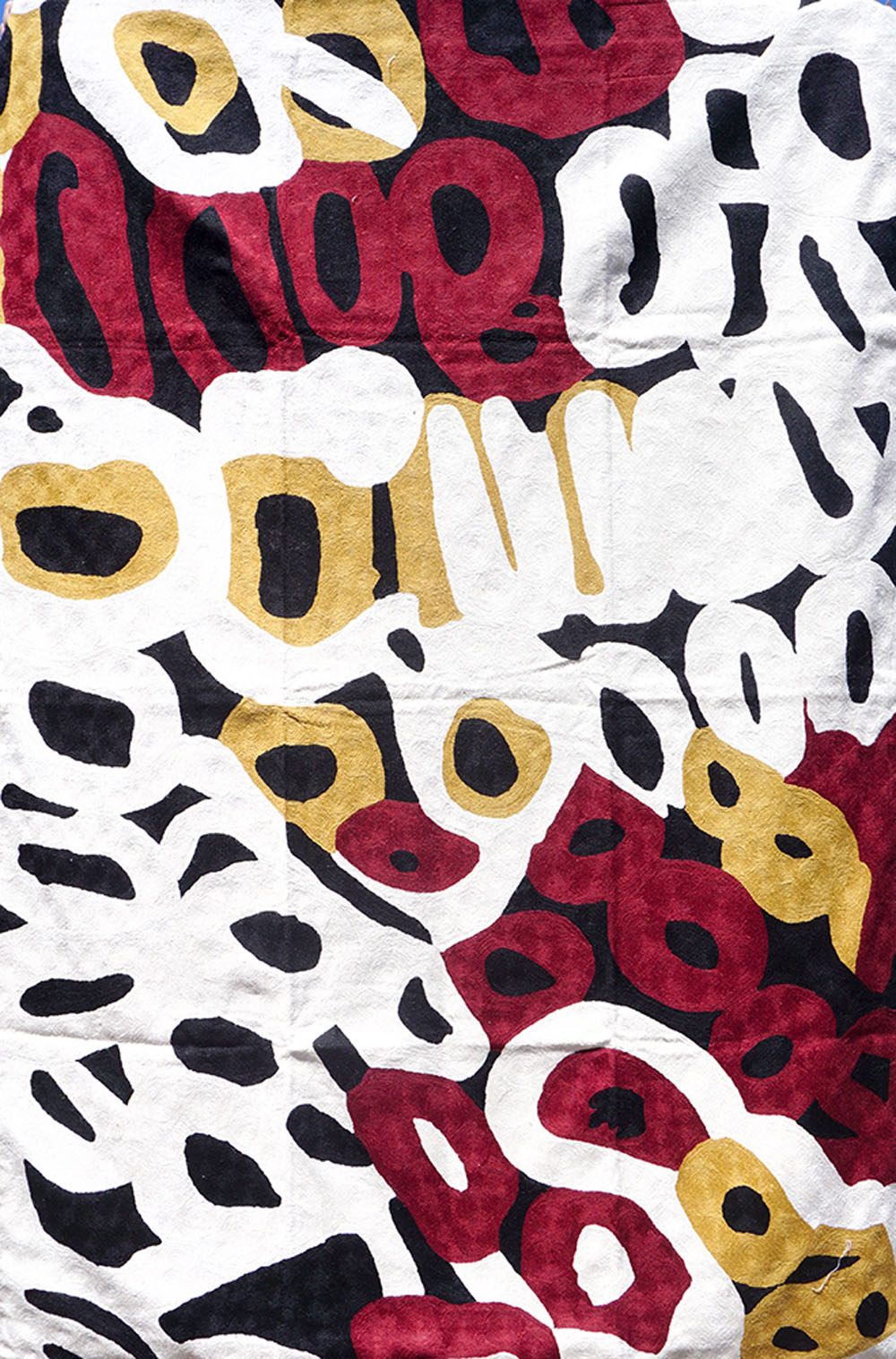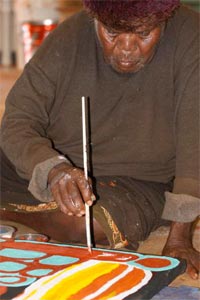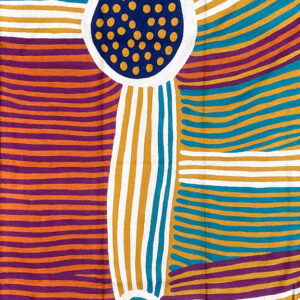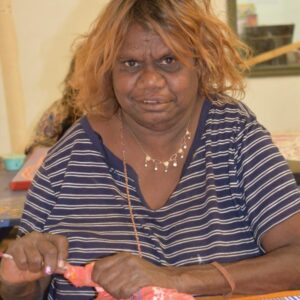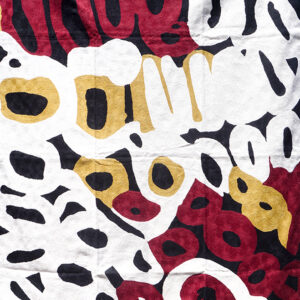Description
Composition: Hand dyed wool and cotton
Size: 91 x 152 cm (36 x 60 inches)
Features:
- Hand embroidered/chain-stitched
- All natural fibres – embroidered wool on cotton canvas
- Fair Trade certified
- Limited edition – individually numbered
- Certificate of Authenticity supplied with each kilim
- Royalties paid to the artist/family on every sale
- Hard wearing
- Back has non-slip surface
- Each kilim has flap on the rear for ease of hanging with dowel/rod
- Matching cushion covers are also available
Chain-stitched kilims are a traditional rug/soft furnishings making technique from Kashmir. As people sat on the floor they were both homewares and decoration. As many artworks are painted on the ground or 3D surfaces/bodies most of the images do not have a set orientation so can also be hung portrait or landscape if preferred.
Artist: Anmanari Brown
Anmanari Brown, a senior Pitjantjatjara woman, was born in the 1930s at Purpurna, an important rockhole with a good supply of water. As a child Anmanari lived with her family in the desert. For a while they camped on the mission at Warburton where she briefly attended school. Anmanari is a senior cultural woman recognised for her knowledge of the tjukurpa and traditional cultural practices. She lives in a wiltja at Irrunytju with her husband Nyakul Dawson, surrounded by many daughters and grandchildren. As well as painting Anmanari crafts traditional punu objects such as wana (digging sticks), coolamon, piti (wooden bowls) and artefacts. She regularly goes bush to sing inma at sacred sites with the other senior women, hunt tinka (lizard) and perentie (goanna), gather maku (grubs) and minkulpa (native tobacco), collect tjanpi (spinifex) and puna (wood).
Anmanari frequently paints the Kungkarrakalpa or Minyma Tjuta Tjukurpa (Seven Sisters Dreaming). This is a major tjukurpa for Irrunytju and communities right across the deserts in central Australia. The seven sisters were born at Illuwarratjarra. They travelled from Kaliwarra to Wannan in Western Australia, stopping at significant sites and rockholes including Kuru Ala, Anmanari’s mother country and a sacred place for women. As the sisters walked across the desert they were followed by a wati kula-kula (lustful man) called Nyiru. He wanted to take one of the sisters as a wife, but he was an old man and they did not want him. At Kuru Ala, he hid behind a yuu (windbreak) watching the kungas (young women). The sisters were a bit frightened, so they hid and ran away. He tracked and followed them across the desert. Sometimes he tried to trick them, once pretending to be wayanu (quandong fruit). Another time the sisters saw a kuniya (python) which they dug up for meat but when they tasted it they realised that it wasn’t good kuka (meat) and must be Nyiru. “They got sick after eating that…The women hunted him away, but he still keeps following them. He is always playing tricks to try and get one of the sisters. That Nyiru, he’s a cheeky one. He caught one of the sisters, the big sister and took her. Too much. She died. He is still chasing them.“The sisters can be seen wandering across the sky as a cluster of starts with Nyiru following behind (the Pleiades).*
Anmanari refers to various incidents from the seven sisters’ epic journey in her paintings. Her artwork has a languid quality. Solid blocks of colour, built up from heavy blotting with punu or layer upon layer of colour applied with thick brushstrokes, are combined with loose graphic elements. Occasionally colours are used with symbolic intent, for instance the rockhole Kuru Ala and other women’s business places are sometimes alluded to by using the colour red, indicating blood. While Amanari does not explicitly refer to tjukurpa tracks and topographical features of country, she does use iconographic symbols to represent figures, such as a curved row of U shaped symbols or series of short parallel lines to indicate the sisters sitting together at a rockhole, hiding in a cave or behind tali (sand dunes). Frequently, Nyuri is represented with his spears and spear-thrower lurking nearby.
Courtesy Mary Knights
*
CARE INSTRUCTIONS:
Do not put place/use in direct sunlight or colors may fade. To clean – dry cleaning recommended. Can be ironed (on the woollen side of the rug) on a wool steam setting. For a big rug it’s easiest done on the floor.
About the Better World Arts chainstitch kilim products
These beautiful, unique textiles are a cross-cultural collaboration combining Aboriginal designs and traditional Kashmiri rug-making techniques. Chain stitched, using hand dyed wool, each is a completely handmade piece. A more empowering way to work, this brings many direct benefits to the artists’ and their community. Control and ownership of intellectual property are also maintained. Purchase of these products guarantees a direct return to the Aboriginal artist’s family and their community.

